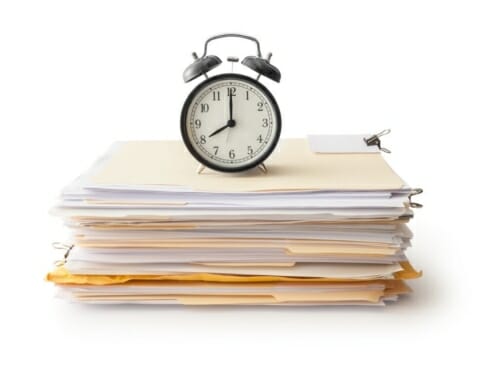NRCP 5- Service and Filing of Pleadings and Other Papers
In general, parties must give the other parties involved in the litigation documents that are used throughout the litigation proceedings. This process is called service. Such documents include all pleadings after the original complaint, discovery papers, written motions, except those heard ex parte, and every written notice, appearance, demand, offer of judgment, designation of record on appeal, and similar papers.1 Service may be completed in person, through mail delivery, or electronic service. Although proof of service is not necessary to validate the service, proof may be made by certificate of an attorney, written admission, affidavit, or other acceptable means.2 In cases that involve a significantly large number of defendants, the court may order that copies of certain pleadings and replies thereto of the defendants are not necessary.3
Proper Methods of Service
Service must be made upon a represented party’s attorney, unless the court orders service directly upon the party.4 There are various ways to complete proper service. The first methods of service involve in-person service. A copy of the pleading may served by; handing it to the attorney or party, leaving it with a person in charge at the attorney or client’s office, or with a responsible person of suitable age at either’s residence.5
A party may also elect to complete service through the mail. A copy should be mailed to the attorney or party’s last known address.6 If the address is unknown, a copy should be left with the court clerk.7 Motions, answers, and other documents constituting the initial appearance of a party must be filed within the time allowed for service if serving by mail.8 After the initial appearance is made, service by mail must come from within Nevada.9 Service by mail is complete upon mailing.10
The last method involves electronic service. Service may be delivered electronically, which includes email or fax, as long as the receiving party consents.11 Consent must be obtained in writing, filed with the court clerk, and served on the other parties to the action.12 Electronic service is completed upon transmission.13 However, electronic service is incomplete if the serving party becomes aware the attempted service did not reach the intended recipient.14
Quinlan v. Camden
In Quinlan, the Nevada Supreme Court reversed a defendant’s award for fees and costs, where the plaintiff did not consent to receiving an offer of judgment via fax.15 Quinlan sued Camden USA after she tripped on a sidewalk in an apartment complex.16 Quinlan was subsequently ordered to pay $41,976 to Camden based on an offer at judgment.17 Quinlan’s attorney often corresponded with Camden’s counsel via fax.18 Quinlan’s attorney even sent the initial settlement offer by fax, which prompted Camden’s offer of judgment.19 The Court ruled that the service by fax violated NRCP 5(b)(2) because Quinlan did not ever expressly consent to receiving faxes.20 Camden argued Quinlan gave implied consent to receiving faxes based off utilizing faxes in the past.21 The Court ruled that implied consent may not be substituted for mandatory written consent required by NRCP 5.22
Filing Pleadings with the Court
Not only are parties required to receive copies of pleadings and other documents, so are the courts. All documents after the complaint that require service to a party must also be filed with the court.23 Required pleadings must be filed with the court clerk.24 In some circumstances, documents may be filed with the judge, who later gives them to the clerk.25 Local rules may require papers to be filed, signed, or verified electronically.26 Electronically signed documents will be treated the same as a written paper.27 It is permissible to file with the court before or after service, so long as it is within a reasonable amount of time.28 Court clerks cannot refuse any filings based on the fact that any paper does not adhere to the form required by Rule 5 or local rules29. Answers and responses, depositions, interrogatories, requests for production, and request for admission may not be filed until used in court proceedings.30 Original responses to requests for admissions or production and answers to responses must be served on the requesting party.31 The requesting party must then make those originals available for either party’s use by the time of the pretrial hearing or trial.32
O’Neal v. Hudson
In a recent case, the Nevada Supreme Court considered whether a proper filing took place when a judge did not transmit a motion to the court clerk. In O’Neal, the appellant was denied a motion for a new trial after failing to file a timely appeal.33 However, the appellant claimed that her appeal was timely, and pointed to an email that contained a motion for new appeal to the judge as evidence.34 The appellant emailed the trial judge with an attachment of the motion and asked whether the appeal should be e-filed with the court.35 The judge directed the appellant to contact the office of Alternative Dispute Resolution for an answer.36 After being told by the Alternative Dispute Resolution to file with the judge, the appellant told the judge she was instructed to file the motion directly with him instead of the court clerk.37 Respondents claimed the email did not constitute a filing pursuant to the definition in NRCP 5(e) because the motion was never transmitted to the court clerk afterwards.38 The Court ruled the trial judge accepted the motion and service was complete after giving custody of the motion to the judge.39 Additionally, the Court ruled the appellant should not be penalized for the judge’s actions.40




